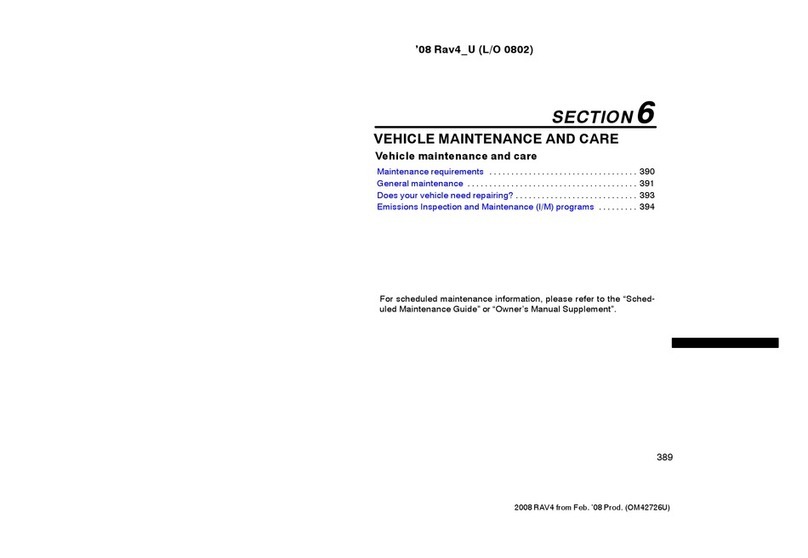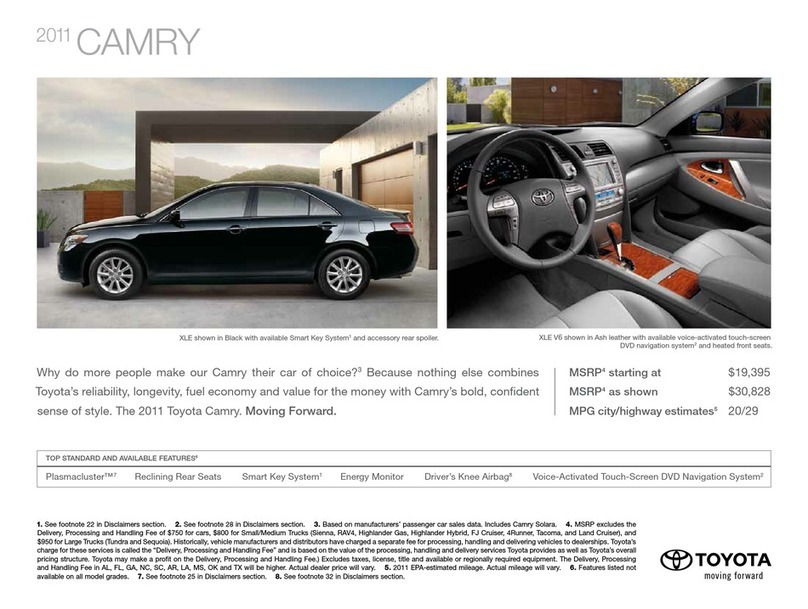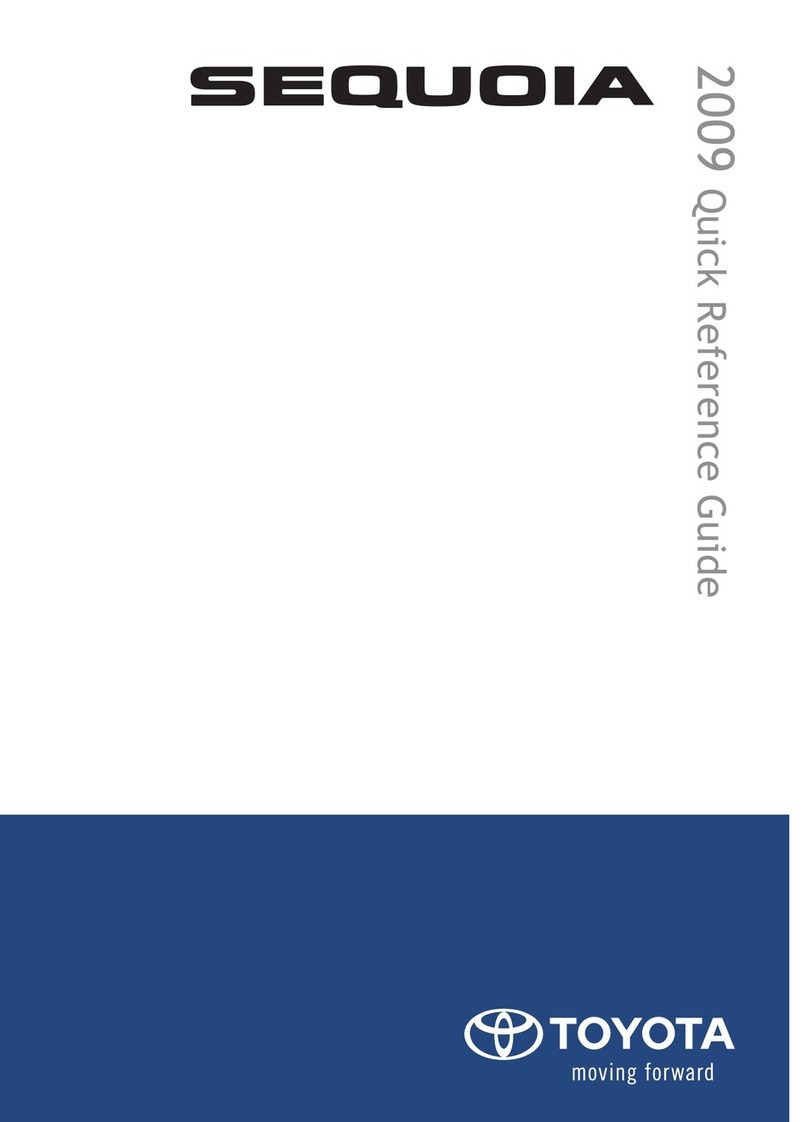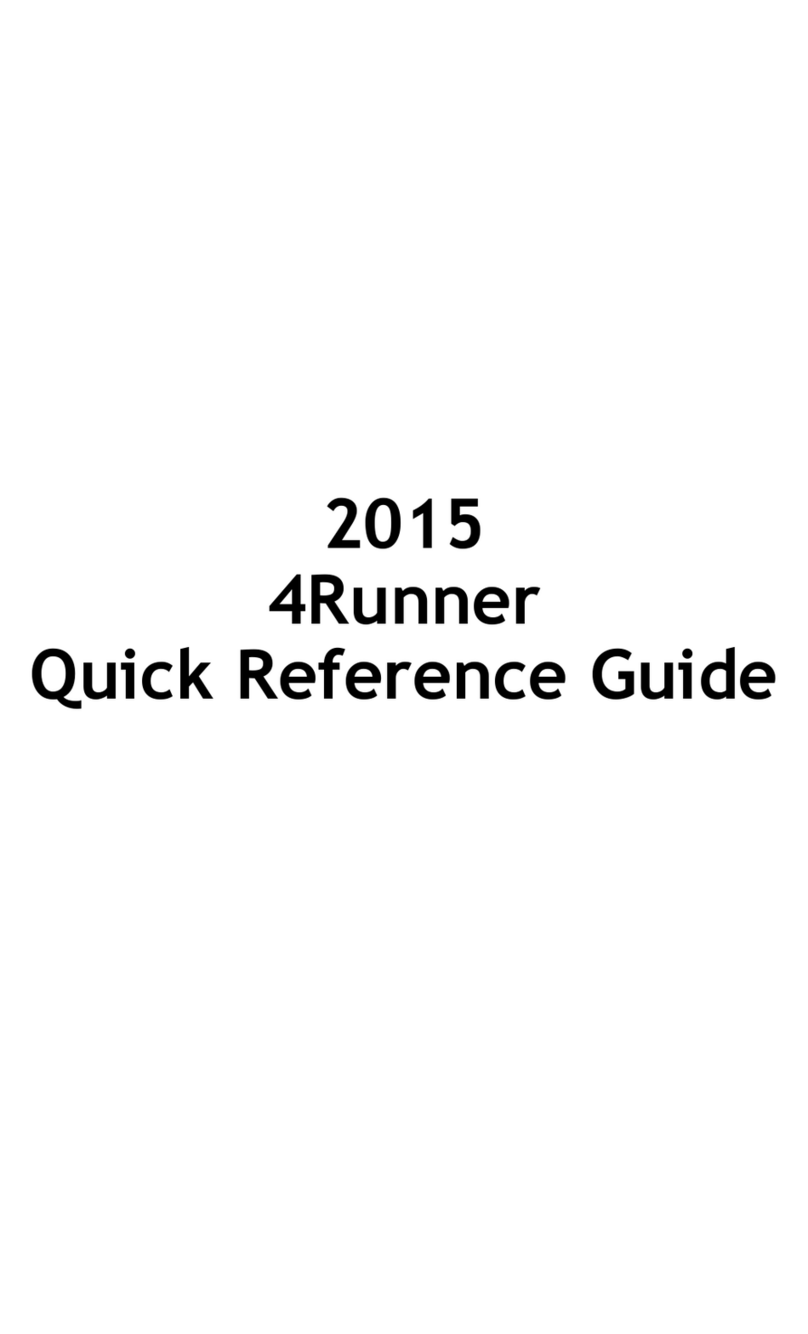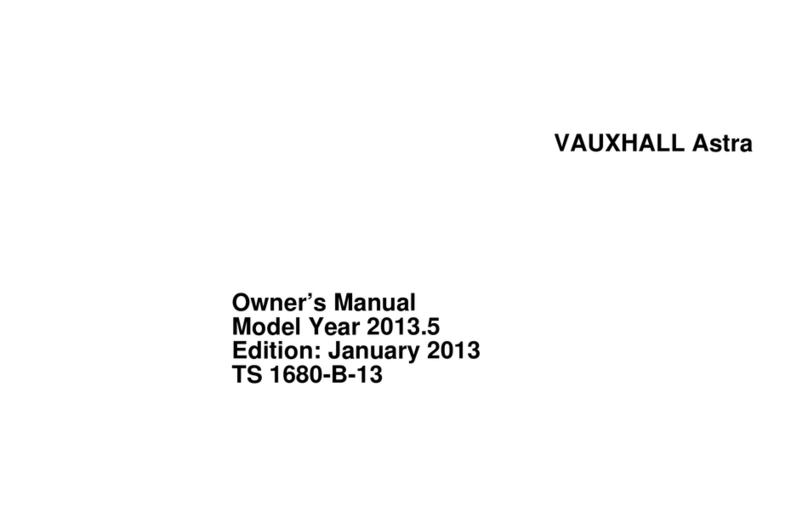
010D8–02
1
2
3
4
65
D25016
–INTRODUCTION REPAIR INSTRUCTION 01–5
8Author: Date:
2004 COROLLA (RM1037U)
REPAIR INSTRUCTION
PRECAUTION
1. BASIC REPAIR HINT
(a) HINTS ON OPERATIONS
1 Looks Always wear a clean uniform.
Hat and safety shoes must be worn.
2Vehicle protection Set a grill cover, fender cover, seat cover and floor mat before starting the operation.
3Safe operation
In case of working with 2 or more persons, be sure to check safety of one another.
When working with the engine running, pay attention to the ventilation of the workshop.
In case of operating on high–temperature parts, rotating, moving and vibrating parts, pay attention not to
burn or injure yourself.
When jacking up the vehicle, be sure to support the specified location with a safety stand.
When lifting up the vehicle, apply a safety equipment.
4Preparation of tools and
measuring gauge Before starting operation, prepare a tool stand, SST, gauge, oil, shop rag and parts for replacement.
5Removal and installation,
disassembly and assem-
bly operations
Diagnose with a thorough understanding of the trouble phenomenon and perform effective operations.
Before removing the parts, check the assembly for general condition, deformation and damage.
When the structure is complicated, take a note or put match marks so as not to make mistakes that affect the
function of the parts.
Clean and wash the removed parts if necessary, and assemble them after a thorough check.
6Removed parts
Place the removed parts in the correct order to avoid mixing up or making them dirty.
As for non–reusable parts such as gasket, O–ring, and self lock nut, change them to new ones following the
instruction of this manual.
Sort out the parts for replacement in a box and show them to the customer.
(b) JACKING UP AND SUPPORTING VEHICLE
(1) Care must be taken when jacking up and supporting the vehicle. Be sure to lift and support the
vehicle at the proper locations (See page 01–17).
